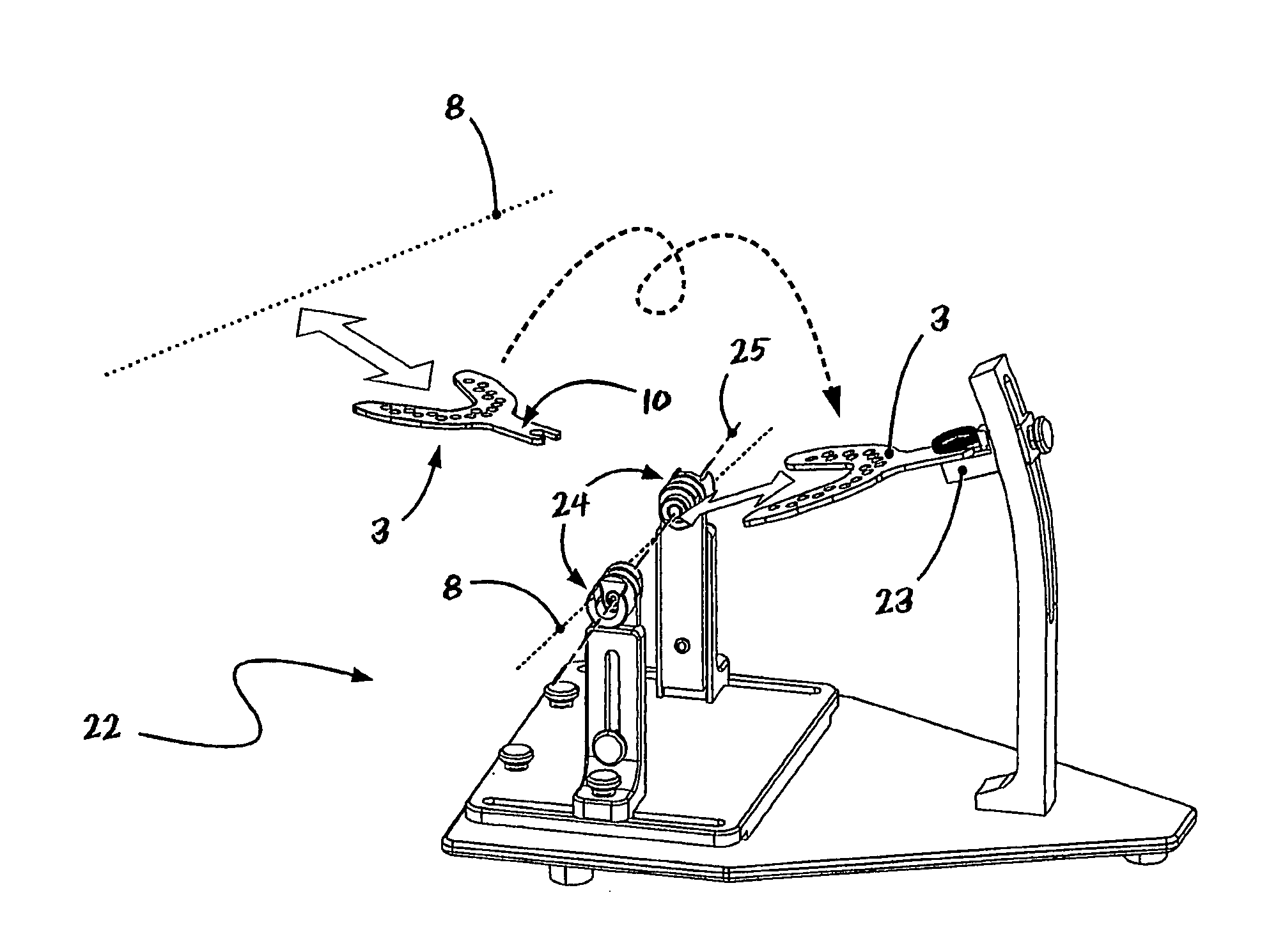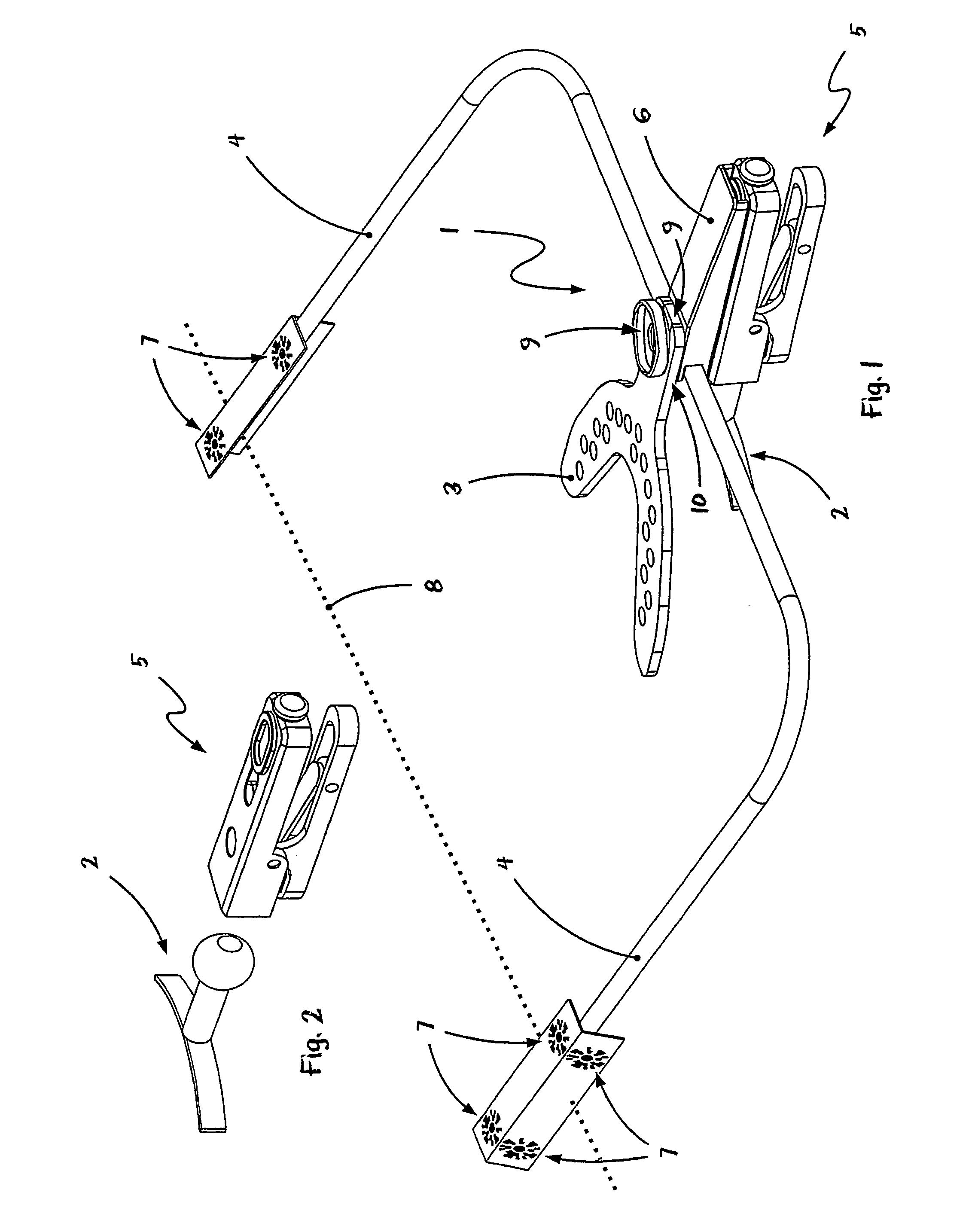Method and device for the transfer of a jaw model in relation to a hinge axis
- Summary
- Abstract
- Description
- Claims
- Application Information
AI Technical Summary
Benefits of technology
Problems solved by technology
Method used
Image
Examples
Embodiment Construction
[0180]FIG. 1 shows a lower jaw adapter 1 with a para-occlusal registration aid 2, an occlusal bite fork 3, as well as a measurement arc 4 for an embodiment of a registration system according to the invention, in an isometric representation; FIG. 2 shows the para-occlusal registration aid 2 according to FIG. 1, with the related connection device 5, separately once again, with the ball joint furthermore shown separately, so that they can be recognized more easily.
[0181]In this connection, the para-occlusal registration aid 2 serves to connect the lower jaw adapter 1, which here comprises connection device 5, intermediate adapter 6, and para-occlusal registration aid 2, as well as the measurement arc 4 here disposed on the lower jaw adapter 1 by means of the intermediate adapter 6, with the measurement markers 7, for the purpose of contact-free jaw joint registration and hinge axis determination with the dental arc (not shown) of the lower jaw of a patient.
[0182]Thus, a defined spatial...
PUM
 Login to View More
Login to View More Abstract
Description
Claims
Application Information
 Login to View More
Login to View More - R&D
- Intellectual Property
- Life Sciences
- Materials
- Tech Scout
- Unparalleled Data Quality
- Higher Quality Content
- 60% Fewer Hallucinations
Browse by: Latest US Patents, China's latest patents, Technical Efficacy Thesaurus, Application Domain, Technology Topic, Popular Technical Reports.
© 2025 PatSnap. All rights reserved.Legal|Privacy policy|Modern Slavery Act Transparency Statement|Sitemap|About US| Contact US: help@patsnap.com



